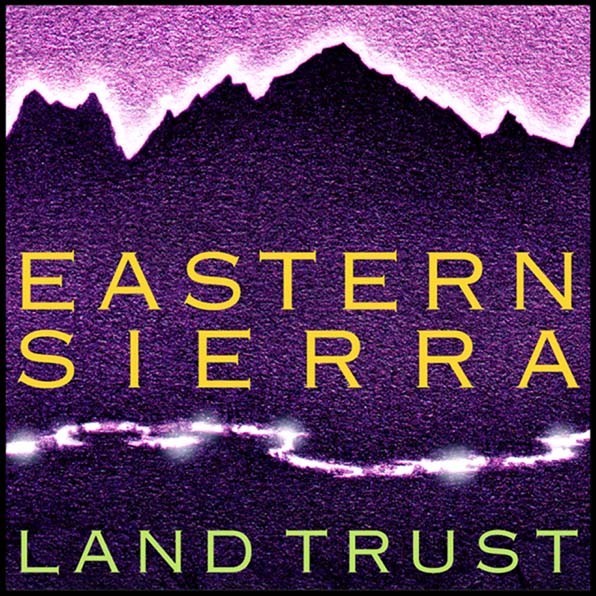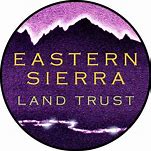 Eastern Sierra Land Trust secures conservation easement on Ullman Ranch, protecting the heart of Huntoon Valley
Eastern Sierra Land Trust secures conservation easement on Ullman Ranch, protecting the heart of Huntoon Valley
Agreement permanently conserves a 1,424-acre working ranch and 5 miles of creeks and streams
Bridgeport, Mono County, California- The heart of scenic Huntoon Valley is being preserved for water, wildlife, and sustainable cattle ranching through a conservation easement by rancher George “Corky” Ullman and Eastern Sierra Land Trust.
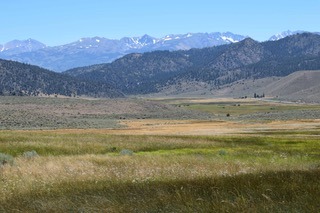
The 1,424-acre Ullman Ranch conservation easement protects water, Bi-State sage-grouse, cattle grazing pastures, and our rural way of life. Photo by Susanna Danner, ESLT staff.
North of the town of Bridgeport, at the foot of the Sweetwater Mountains, a shining creek curves through three miles of bright green meadows in Huntoon Valley. This seasonal cattle ranch, along the historic stagecoach route between Bridgeport and Devil’s Gate, produces beef cattle on irrigated pastureland and sagebrush steppe. Ullman Ranch protects habitat for Bi-State sage-grouse, which raise their chicks in the ranch’s wet meadows – the “emerald islands” so critical to wildlife in the arid West. By agreeing not to subdivide and develop the ranch, Mr. Ullman is preserving a critical migration route for mule deer and securing habitat for a variety of wide-ranging wildlife such as sage-grouse, bees and butterflies, American badger, eagles, and songbirds.
Eastern Sierra Land Trust (ESLT) worked with Corky Ullman to create the conservation easement, and secured the federal, state, and local funding needed to complete the project. Kay Ogden, Executive Director/CEO of ESLT, said “Mr. Ullman’s generosity meant that ESLT was able to acquire the conservation easement at a reduced purchase price.”
Permanent protection of the working ranch, which has been used for livestock ranching for more than 90 years, helps preserve our rural way of life and the economy of Mono County.
Rancher Corky Ullman comments, “I was fortunate to preserve the ranch. At first, I tried to enroll the ranch in the Williamson Act for open space and agriculture, but that program has lost its funding. I didn’t want to develop the ranch. This agricultural conservation easement allowed me to preserve the ranch forever.”
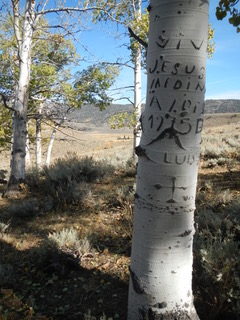
Aspen trees on Ullman Ranch show arborglyphs carved by Basque sheepherders that were part of the rich history of this working ranch. Photo by Susanna Danner, ESLT staff.
The Numa (People), or Northern Paiute groups, were hunter-gatherers in the region prior to the arrival of Europeans. John C. Frémont and Kit Carson explored Huntoon Valley, passing through the ranch during their travels from Bridgeport to Swauger Creek and Devils Gate in 1844. For decades prior to Mr. Ullman’s ownership, the Property was used by Mono Land and Livestock Company and the Sario family for sheep ranching. The original stagecoach stop (the red barn beside Highway 395) built in the 1800s is still in use on the ranch.
Ullman Ranch provides homes for a wide range of iconic Eastern Sierra wildlife and has long been a priority for conservation. The ranch is within the migration corridor and summer range of the East and West Walker mule deer herds, with several hundred deer passing through the valley annually. Bi-State sage-grouse gather on nearby leks for their famous annual mating dance. Sage-grouse hens then nest in sagebrush on the ranch and bring chicks to the ranch’s green meadows to forage. The ranch also provides a buffer for alpine habitat used by the federally-endangered Sierra Nevada bighorn sheep.
Funding for this project was provided by USDA’s Natural Resources Conservation Service (NRCS) and the California Strategic Growth Council’s Sustainable Agricultural Lands Conservation program.
NRCS provides financial and technical resources that help landowners and partners protect the nation’s most productive grasslands, wetlands, and agricultural lands by providing funding to purchase easements on private working lands. NRCS’ Agricultural Conservation Easement Program that protects grasslands of special significance provided funding for the Ullman Ranch conservation easement because of the habitat the ranch provides for Bi-State greater sage-grouse.
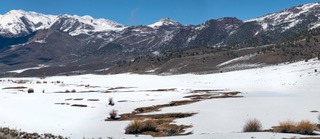
At the foot of the Sweetwater Mountains, the curving Swauger Creek runs through Ullman Ranch, providing pasture for cattle and habitat for wildlife. Photo by Rick Kattelmann, ESLT board member.
The Ullman Ranch project is part of California Climate Investments (www.caclimateinvestments.ca.gov), a statewide program that puts billions of Cap-and-Trade dollars to work reducing greenhouse gas emissions, strengthening the economy, and improving public health and the environment– particularly in disadvantaged communities. The Cap-and-Trade program also creates a financial incentive for industries to invest in clean technologies and develop innovative ways to reduce pollution. California Climate Investments projects include affordable housing, renewable energy, public transportation, zero-emission vehicles, environmental restoration, sustainable agriculture, recycling, and more. At least 35 percent of these investments are located within and benefiting residents of disadvantaged communities, low-income communities, and low-income households across California.
Conservation easements protect land for future generations while ensuring owners retain certain property rights. An agricultural easement property continues to provide economic benefits for the region in the form of jobs, productivity, and property taxes, while protecting specific conservation values such as water and wildlife habitat. Conservation easements are individually tailored to meet a landowner’s goals and the conservation values of the land.
“Because of Corky’s vision, this scenic valley with a rich history will remain as it is today – a working landscape that is home to wildlife. I’m also thankful for the feeling of peace I get when I see the beautiful, wide open valley before me, and that is something that all of us can feel driving past it on Highway 395,” says Kay Ogden, Executive Director/CEO of Eastern Sierra Land Trust.





